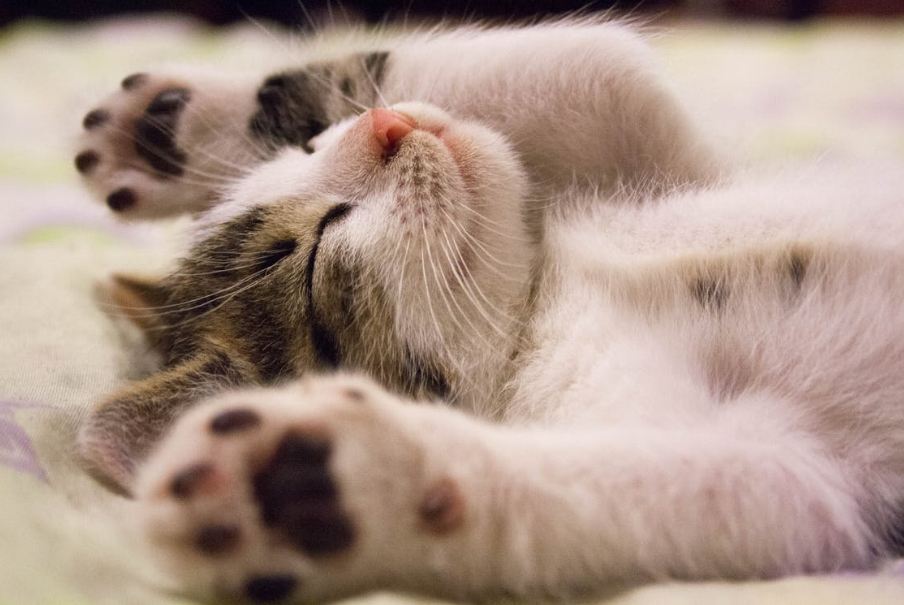One of the important aspects in the raising of new kittens is to train them to use litterbox. The responsibility does not end there simply by placing a litterbox for your new kitten. It is also a fact that kittens are likely to use them anyway out of their instincts. It is in their instinct to bury their waste after excretion. However, you cannot leave it to the kitten’s instincts totally. You are required to take care of your new kitten in every matter properly.
A litterbox is a simple container that includes loose granular material which is called cat litter. In simple words we can say that it serves as a toilet for cats. There are certain factors that you should keep in mind in order to train your kitten to use a litterbox. Here is the list of various things that you are supposed to implement in your schedule while raising a kitten:
1. Behavioral Instincts
You need to understand the behavioral instincts of kittens that eventually lead them to use the litterbox or defecate in outdoors. The average duration to start litterbox training of your kitten is between four to six weeks. If you already have another cat in the house, then it can surely be helpful in this regard. The older cat will guide the kitten in its own moves to use the litterbox.
However, if there is no other cat to guide the new kitten then you are supposed to play the role of instructor for its litterbox training. Normally, kittens are most likely to defecate after 20-30 minutes of their meal. Moreover, young kittens are also curious and they eventually start to explore on their own. Whenever the kitten does that, instantly take the kitten to the litter box. In this way, you can develop the kitten’s habit of using the litterbox instead of excreting outdoors or on the carpets.
2. One litter box for each kitten
It is better to have at least one litterbox for each kitten. For instance, if you are fostering two kittens at the same time then you should keep two litterboxes for them. In such a case you are also recommended to place a third litterbox too.
3. Choose the Right Kind of Litterbox
There are different varieties of litterbox available for you to select the one that is most suitable for your kitten. Generally, kittens are likely to prefer large litterbox that can easily be used. Mostly litterboxes are rectangular in shape and they are made up of plastic. The different varieties range from simple cardboard disposable litterbox to automatic devices too.
The modern automatic litterboxes have the features of self-cleaning which is gaining popularity among the general masses. However, the noises due to motor cleaner and vibrations can cause serious disturbance for kittens. It can also repel the kittens from using the litterbox. This is the drawback that is associated with these automatic litterbox devices which can possibly prove to be a hindrance in the whole process. The condition, however, does not apply for every situation. If your kitten does not get disturbed by the noises, then you can easily avail the modern automatic litterbox for your kitten.
4. Kinds of Litter
The litter is mostly made up of wood or pine pellets, paper, silica, wheat, corn and fuller’s earth etc. There are other biodegradable substances that are added into the manufacturing process of litter. Most of the cats prefer to use unscented and soft litter. These litters can easily be cleaned by the caregivers.
Naturally, cats like to use soil and sand litter, though they are heavy to carry. Among the different varieties, there are also some aromatic and dusty litters with box liners. Generally, they are not preferred to use by most of the cats and young kittens. Some litters also include perfumed crystals that can increase the risk of asthma in cats. In addition to that some scented crystals of cedar and pine can also bother humans in this regard.
Non-clumping litter is recommended for young kittens generally. It is because in the initial weeks, kittens are likely to eat and chew everything. Otherwise, if kittens eat and swallow clumping litter then it can result in to serious health problems. However, you can use the clumping litter when your kitten is of 2 to 3 months of age and acquainted with litter box training satisfactorily. Moreover, you are advised to look for scoop-able litter. You can easily remove the kitten’s waste with it.
You must keep in mind the importance of the kind of litter that you used since the beginning. Cats are more likely to get accustomed to the particular litter provided to them regularly. If you change the kind of litter, then your cat can experience difficulty in recognizing it as its toilet territory.
5. The Amount of Litter
Generally, a depth of 3-4 cm litter in the box is recommended by most of the veterinarians. However, you can decide the amount of litter in the litterbox keeping the cat’s comfortability in sight. Sometimes, cats are happier in deep litter in their boxes. In such a case you have to keep the depth as deeper as possible.
6. Open and Lid-covered Litterboxes
Besides open litterbox, there are also lid-covered litterboxes available that keeps the litter contents hidden from the sight. Most of the people prefer the lid covered litterbox for their young kittens and even adult cats. It is because they offer more seclusion and private space. However, it depends on the context and the way a kitten or cat adjust with it.
In large and multistory houses, it is better to keep open litterboxes for the kittens. In this way they are easily accessible and visible to them.
7. Location of the Litterbox
You are advised to place the litterbox a safe distance away from the cat’s food and water. Naturally, cats are more likely to use a secluded place for defecation. You should try to maintain the quietness as kittens and cats prefer private spaces for excretion. For the purpose, avoid the busy areas of your home to place the litterbox in the living territory of your cat ensuring peaceful environment.
If you have an adult cat and living in a multistory house, then you should place one litterbox on each floor. Always keep them in multiple places that are easily accessible to the cat. If your kitten or adult cat is not using the litterbox, then increase the number of litterboxes for them to improve their toilet behavior.
Apart from that if your cat is preferring outdoors for excretion then it is good but the best step is to place the litterbox inside the house and train the cat to use it. It is better than outdoors because at the advent of cold, rainy seasons and harsh weather sometimes it can be dangerous for their health.
8. Size of the Litterbox
The size of the litterbox must be large enough to accommodate your kitten or an adult cat in entering, turning and excreting in it. The ideal size that is recommended by veterinarian is 1½ times the length of your cat that is from their nose to the base of their tail. This space can easily provide you room for moving around, digging and covering with no restriction.
Consequently, the size of litterbox is subject to the size of your kitten or cat. There are some giant and mixed breeds that need a litterbox accordingly. However, if you are adopting a kitten then then you can simply start with small litterbox but gradually you have to increase the size of it.
9. Importance of Positive Reinforcements
The importance of positive reinforcement can never be overlooked in this regard. Always try to provide the most favorable conditions to your cat and young kitten particularly. If your kitten is getting attracted to something, that is not harmful, then you should place it in its living territory. You can also use it to train your kitten in exploring and understanding the litterbox too. However, the behavioral development varies among kittens. Sometimes, they quickly adopt it and there is also a possibility of delay in learning and training. You should avoid punishing and try to remain patient.
10. Maintenance of the Litterbox
You are supposed to clean the litterbox on daily basis to ensure healthy and hygienic environment for your cat or kitten. You should remove the excretory waste on daily basis and add further litter accordingly. You are advised to wash the litterbox once in four weeks with hot water and soap. The entire litter must be replaced in the whole box weekly. You must avoid other cleaning chemical or products that have ammonia in them in the cleaning process. For antibacterial cleaning, you are advised to consult Veterinarian.
Conclusion
All of the above recommendations play a vital role in the litterbox training of your new kittens. Your responsibility does not simply end with the litterbox that you provide for your new kitten. You are required to take care of other factors too that certainly have a significant impact in the whole process. Therefore, it is mandatory for you to keep all the above discussed factors in mind for the effective behavioral development of your new kitten regarding litter box.

